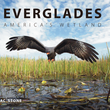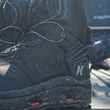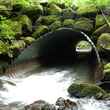Anglers and other stream and river conservationists, already at odds with hydraulic fracturing, open pit mining and other fossil fuel extraction operations; are placing an increased focus on longwall mining after the state of Pennsylvania released information indicating that longwall mining operations by Consol Energy have severely depleted or entirely eliminated streamflow for six streams in the southwestern portion of the state.
Longwall mining is a more efficient mining practice than traditional room and pillar mining. In longwall mining, massive hydraulic equipment is used to shear and slice large segments of coal from mines. Unlike room and pillar mining, in which blocks of coal and other supports are left behind to support the earth, longwall mining leaves open caverns behind. These open caverns often cause surface subsidence above the mines, disrupting ecosystems and diverting water flows. In some locations, surface subsidence of more than 15 feet has resulted from longwall mining.





























